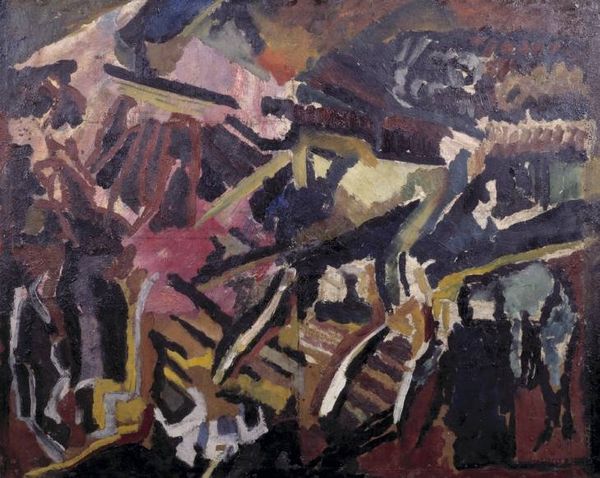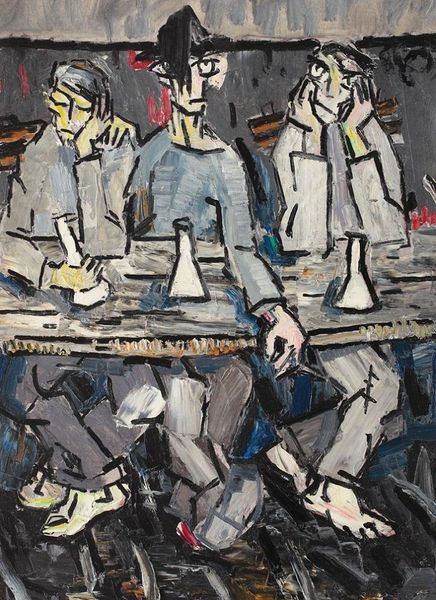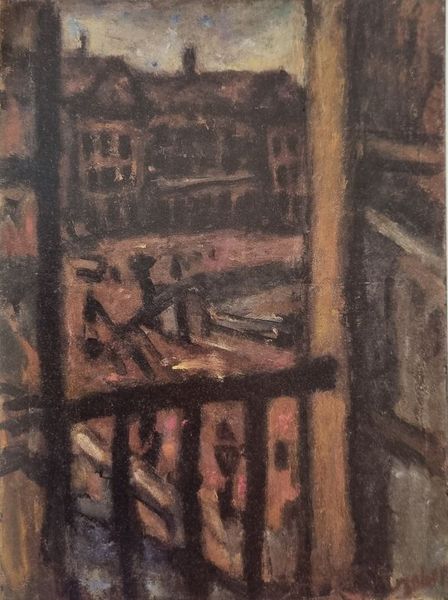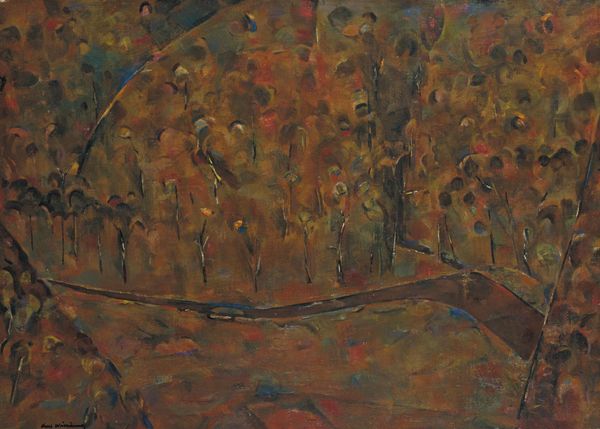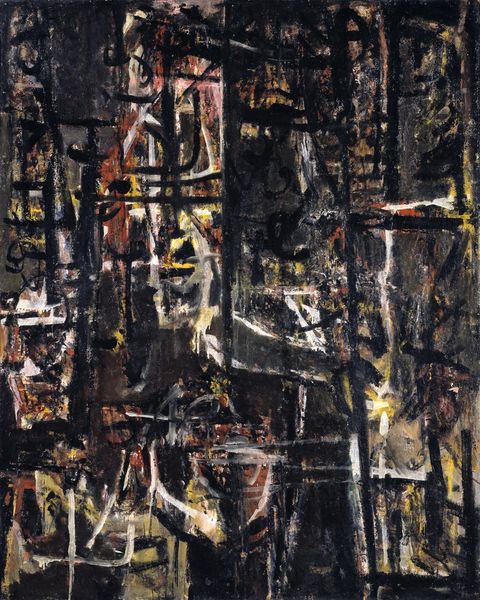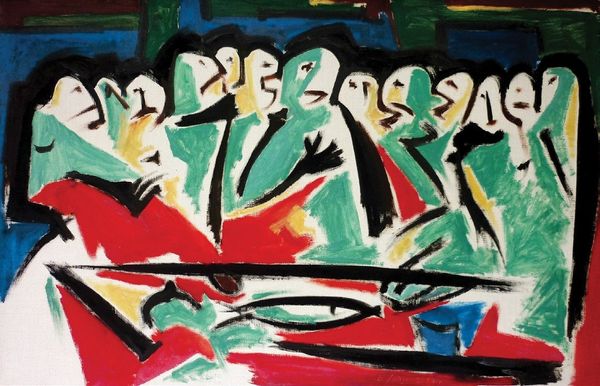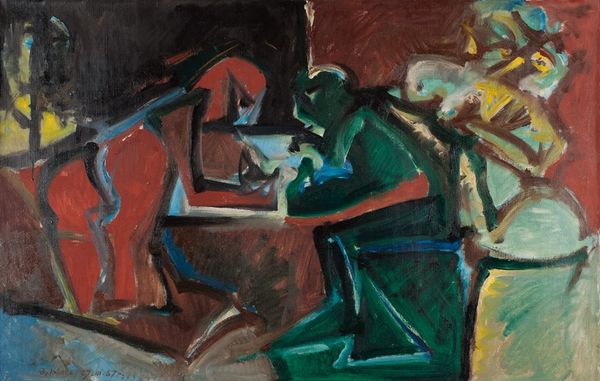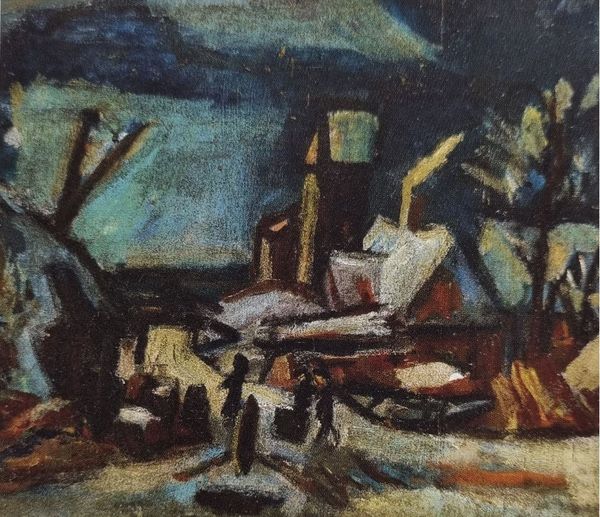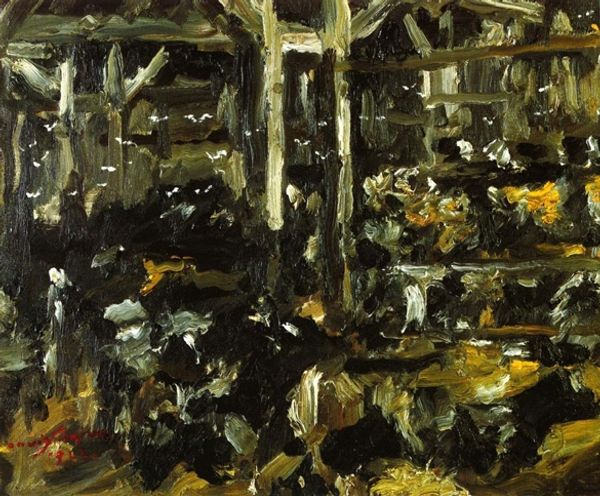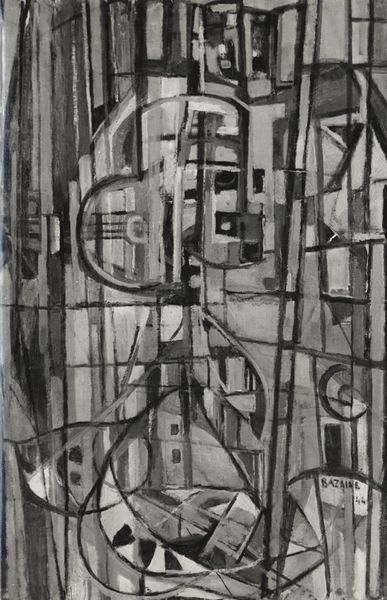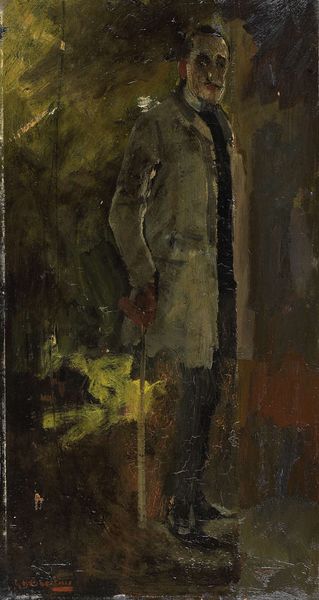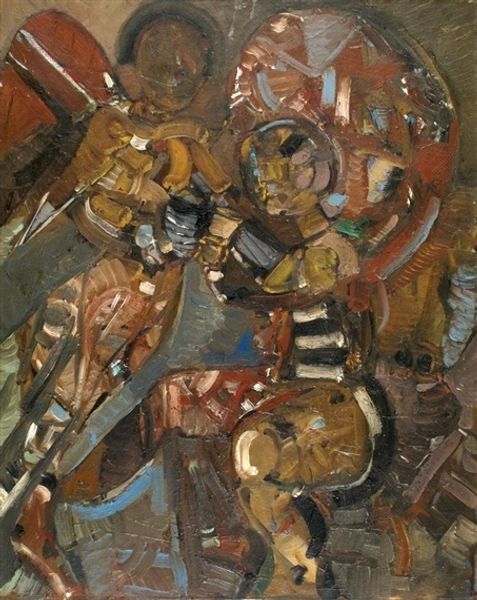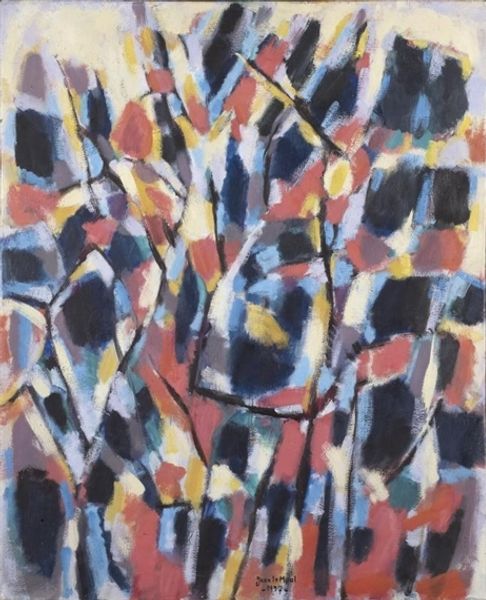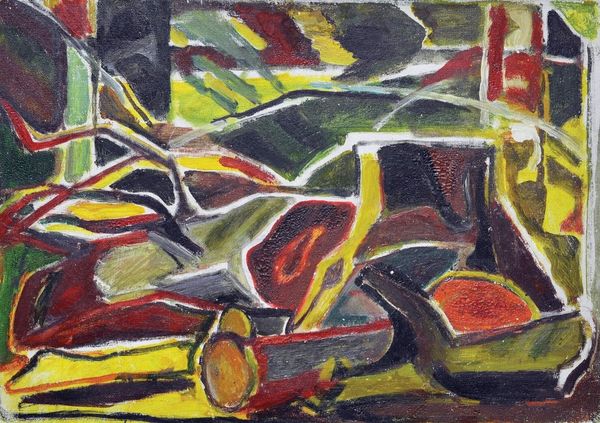
Copyright: Public domain
Editor: Here we have Dorrit Black’s “The Orchestra Pit, Theatre Royal,” from 1935, using oil and watercolor. The image almost pulses with energy, but it's a somewhat chaotic scene, not sharply defined. What draws your eye when you look at this painting? Curator: The materiality speaks volumes. Watercolor, often associated with amateur pursuits, combined with oil suggests a breaking down of traditional hierarchies between 'high' and 'low' art forms. How might Black have viewed the labor of the musicians themselves? Were they artists or artisans? Editor: That's an interesting perspective. It suggests that Black might have been commenting on class distinctions through the materials she used. Do you see that tension reflected in the composition too? Curator: Indeed. Look at the repetition of form; the musicians, almost faceless, become part of a mechanical, productive force. Black seems interested in process here, capturing the raw energy of production and performance. Notice how the visible brushstrokes and overlapping of the watercolor almost celebrate the labor inherent in the painting's creation. It mirrors the labor on display in the orchestra pit. Editor: So, the very act of painting mirrors the act of creating music within the theater. The medium *is* the message in a way. It almost makes you wonder if she had to quickly produce this art, maybe during the orchestra pit's production? Curator: Precisely! It encourages us to think about art not just as a finished product but also as a result of physical processes tied to its own production, like the instruments of the musicians. What societal expectations surrounded the creation of art during that time that this piece may be in conversation with? Editor: Seeing the materiality in this context, considering the artist's choices in the context of labor and social commentary adds so many layers. It changes how I see this artwork. Curator: It certainly shifts our focus to how the means of production inform and shape our understanding of art.
Comments
No comments
Be the first to comment and join the conversation on the ultimate creative platform.
